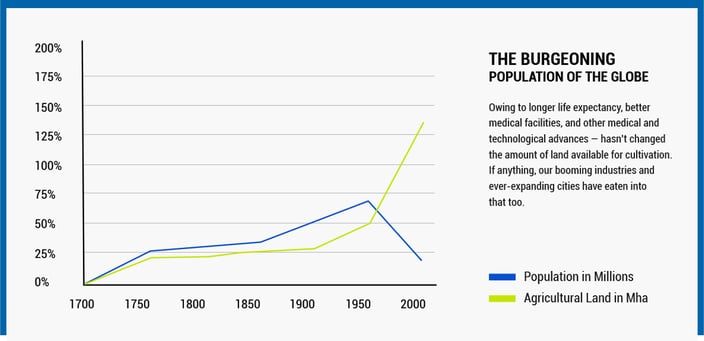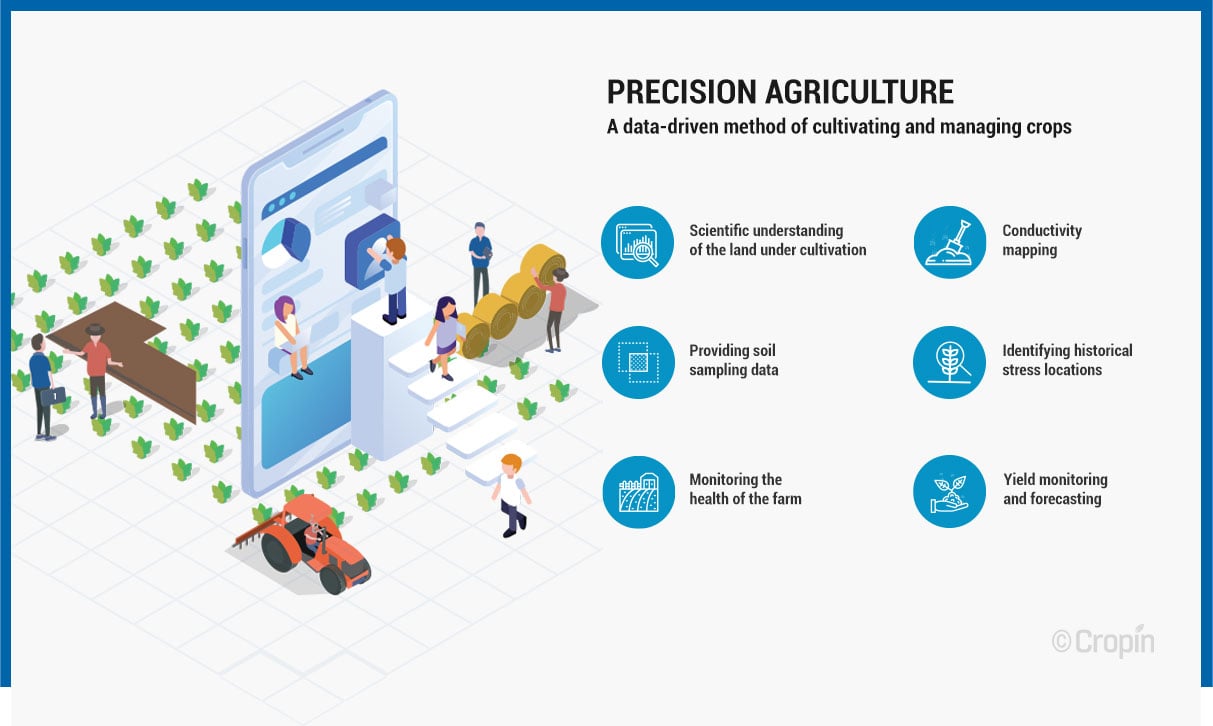Listen here:
Have you ever wondered about that eureka moment when mankind realized that it could grow its own food and sustain life? For a large part of history, we were hunter-gatherers who led a nomadic lifestyle, moving from one place to another, eating whatever nature provided until that moment in time when someone decided to plant a seed.
It was around 12,000 years ago, following whatever spark of genius that could have inspired it that humanity witnessed the first instances of cultivation and food production. In the centuries that followed, change was slow and it wasn’t until the Industrial Revolution during the 18th and 19th centuries that we began to look at food production more scientifically. The widespread mechanization that allowed crops to be cultivated with fewer workers, enabled better soil replenishment, and improved care for livestock is what eventually led to the Green Revolution that began in the 1960s. In the decades since then, mankind has made enormous leaps of progress, and agriculture has kept pace.
At least, we are getting there, and the future of agriculture technology is right around the corner..
Food in a Shrinking World
We have reached an interesting stage of our food story and the need for the use of technology in agriculture is now more real than ever. As the world becomes smaller, thanks to lightning-fast connectivity and more efficient modes of travel and communication, food is no longer limited to what is locally available. Gone are the days when au gratin potatoes and confit lamb were terms you heard floating around exclusively in Michelin-star restaurants or tucked between the glossy pages of food magazines. Food, today, is a form of expression. One that is not limited by language, race or geography.
But what makes the discussion even more pertinent is the fact that we are facing a food production crisis like never before. Technology is not just making the world smaller metaphorically, it is shrinking physically too. The decrease in the availability of agricultural land that can feed the 9.8 billion people expected to populate the world by 2050 is a definite reason to sit up and take note.
The burgeoning population of the globe — owing to longer life expectancy, better medical facilities, and other medical and technological advances — hasn’t changed the amount of land available for cultivation. If anything, our booming industries and ever-expanding cities have eaten into that too.
The result: the emergence and impact of technology in agriculture with the aim of improving sustainability and finding more efficient ways to cultivate the limited land that we have at our disposal. It is what will lead us through to Agriculture 4.0, from a technology perspective.

Digital Farming to Solve the Food Problem – Realizing the Impact of Technology in Agriculture
The modern farmer has arrived. Precision farming, a data-driven method of cultivating and managing crops on cultivable land in the most optimum manner with the help of advanced technology in agriculture, allows farmers to make the most of the resources that are available to them.
No longer are farms subject to inconsistent and unscientific farming practices, variable weather conditions, pests, and other risks that impacted food production. With the use of technology in agriculture, farmers can adopt a more structured approach to cultivation and accurately predict the outcome with a high level of certainty. Almost every aspect of cultivation — from planting to sowing and harvesting — stands to benefit from the impact of technology in agriculture.

But how does digital farming help the modern farmer solve agricultural challenges? At the starting point, it provides the farmer with a better understanding of the land he is about to cultivate so the process of production is scientific and less arbitrary.
What this translates to in the literal sense is:
But digital farming is not just about understanding and analyzing the data captured through connected machines to cultivate a piece of land with higher efficiency — its overall impact on the process of cultivation is much larger.
The Future is Smart, and So Are Our Farms
Since every step of digital farming is recorded and systematic, it leaves behind a digital footprint that can be analyzed to unearth future enhancements. Business Insider Intelligence predicts that smart farming systems in agriculture will increase from 30 million in 2015 up to 75 million by 2020. Going by that number, connected farmers are expected to generate as many as 4.1 million data points each day in 2050, from a meager 190,000 in 2014.
The next frontier in farming is about accurately analyzing this huge mass of data in a manner that enhances production and removes any form of ambiguity in the cultivation process. What started as precision farming, has evolved to develop a smarter system of agricultural production that utilizes the information and insights provided by intelligent networks and data management tools to derive a more sustainable and scientific approach to farming.
The future of food production depends on a deeper understanding of the physical limitations of the world we live in, and an improved application of new technology in agriculture to overcome those limitations.
In many ways, the future of the world itself depends on it.









